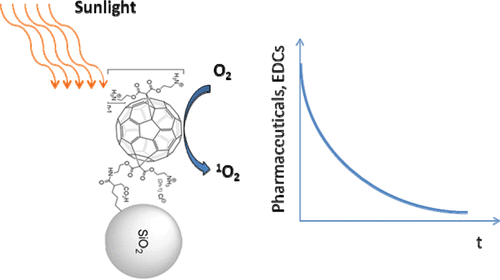Publication
Advanced Redox Technology Lab
Publication
Advanced Redox Technology Lab
Journal papers
We recently reported that C60 aminofullerenes immobilized on silica support (aminoC60/silica) efficiently produce singlet oxygen (1O2) and inactivate virus and bacteria under visible light irradiation. (1) We herein evaluate this new photocatalyst for oxidative degradation of 11 emerging organic contaminants, including pharmaceuticals such as acetaminophen, carbamazepine, cimetidine, propranolol, ranitidine, sulfisoxazole, and trimethoprim, and endocrine disruptors such as bisphenol A and pentachlorophenol. Tetrakis aminoC60/silica degraded pharmaceuticals under visible light irradiation faster than common semiconductor photocatalysts such as platinized WO3 and carbon-doped TiO2. Furthermore, aminoC60/silica exhibited high target-specificity without significant interference by natural organic matter. AminoC60/silica was more efficient than unsupported (water-suspended) C60 aminofullerene. This was attributed to kinetically enhanced 1O2 production after immobilization, which reduces agglomeration of the photocatalyst, and to adsorption of pharmaceuticals onto the silica support, which increases exposure to 1O2 near photocatalytic sites. Removal efficiency increased with pH for contaminants with a phenolic moiety, such as bisphenol A and acetaminophen, because the electron-rich phenolates that form at alkaline pH are more vulnerable to singlet oxygenation.
